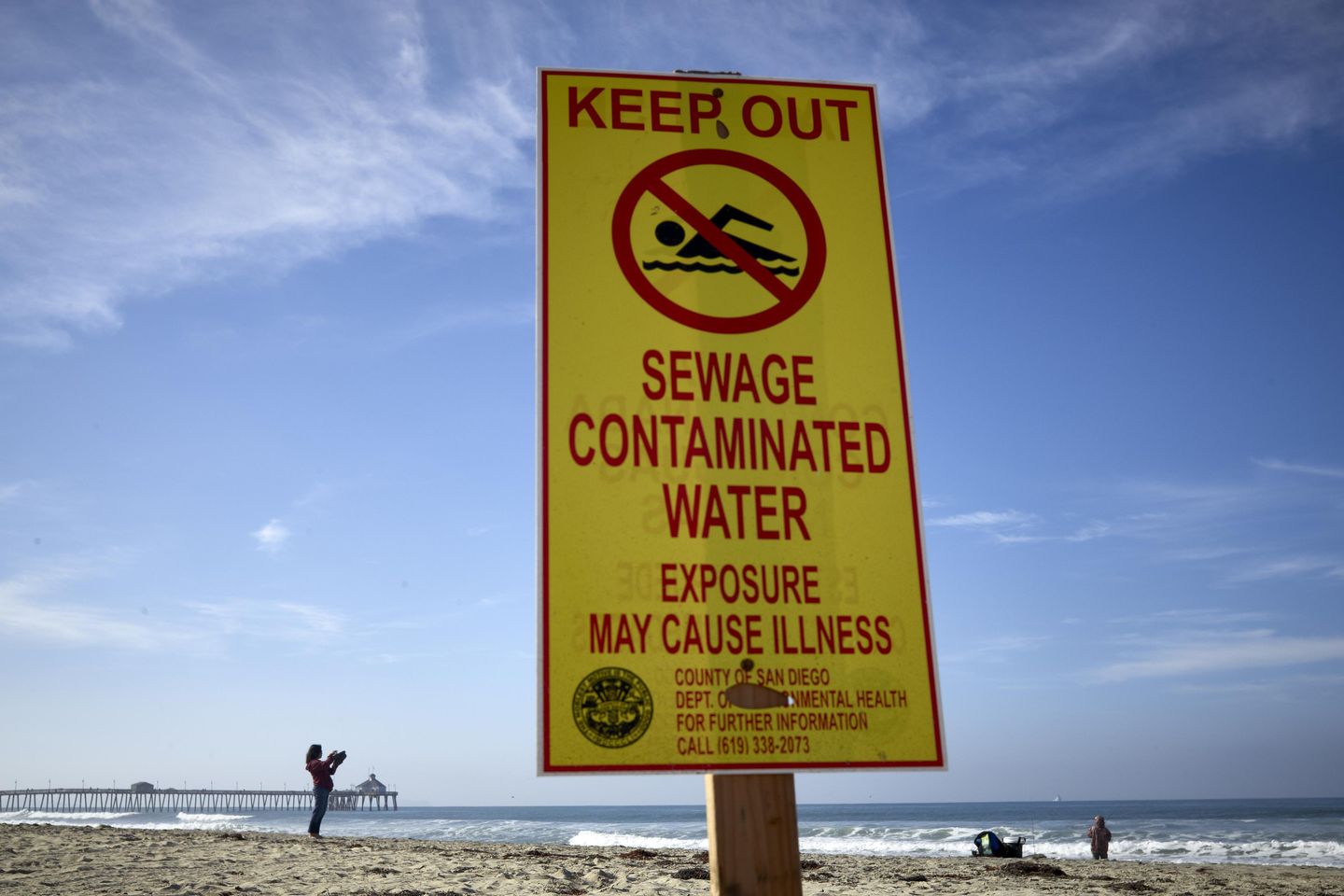
Since Dec. 8, 2021, yellow signs have prohibited swimming at San Diego’s Imperial Beach, one of the casualties of Mexico’s decades-long practice of dumping billions of gallons of sewage into the Tijuana River.
The sewage gushes into the Pacific Ocean, polluting San Diego’s beaches, stinking up communities and endangering the health and safety of U.S. Navy Seals who train in the area.
Southern Californians are fed up and so is the Trump administration, which is cracking down with renewed force on Mexico’s pollution of the river and neglect of a wastewater treatment facility that is overwhelmed by Tijuana’s population surge.
The raw sewage crisis is now “top of mind” for President Trump, said Environmental Protection Agency Administrator Lee Zeldin, who toured the impacted area earlier this week.
Since 2018, more than 100 billion gallons of raw sewage have spilled into the waters of San Diego County, and along with it, industrial chemicals, stormwater runoff, tires and other trash.
The problem has worsened over the past few years as Tijuana became inundated with new residents, as well as thousands of migrants headed to the U.S. Southern border.
A record amount of sewage flowed from Mexico into San Diego last year.
Mr. Zeldin met with Mexican officials on Tuesday and secured commitments to fund and carry out improvement projects. The upgrades will hopefully enable the wastewater treatment plant to handle the volume of sewage on Mexico’s side of the border and stop the spillage into U.S. waters.
“We have almost no patience,” Mr. Zeldin said. “It’s because the Americans on our side of the border, who have been dealing with this for decades, are out of patience.”
The cross-border sewage flow causes a sickening smell that San Diego residents who live near the Tijuana River say is causing gastrointestinal issues and breathing problems.
The sewage-laden river crosses through land owned by the Navy, and the pollution has forced the Defense Department to consider cancelling or relocating nearly all of the water training exercises at the Naval Amphibious Base Coronado.
“This poses an unacceptable choice between preserving the health of our service members and maintaining essential military readiness — both of which are critical to our national security,” Sen. Tim Sheehy, Montana Republican, wrote to Mexican President Claudia Sheinbaum last week. He demanded that Mexico take action to remediate and expand its water treatment facility.
Mr. Sheehy said the 2020 United States-Mexico-Canada Agreement authorized $300 million for the sewage problem to be rectified. Engineers determined the treatment plan needed extensive remediation before it could be expanded, but Mexico has yet to make those repairs.
Mr. Zeldin said he is devising a list of steps Mexico must start taking immediately to end the environmental crisis.
After a meeting on the U.S. side of the border Tuesday, Mr. Zeldin said Mexican officials conveyed an eagerness to stop the sewage leak, which is polluting their beaches, too.
“What is being communicated by the new Mexican president is an intense desire to fully resolve this situation,” Mr. Zeldin said.
San Diego Democrats who appeared with Mr. Zeldin on Tuesday said the Trump administration’s aggressive actions to address the Mexican sewage problem make them optimistic after years of frustration.
“We have a lot of hope at the moment that things will get done,” Rep. Juan Vargas, California Democrat, said.
Mr. Zeldin said the roundtable discussion with Mexican officials included a proposal to use chemical remediation to remove bacteria from the water. There is also a plan to divert 10 million gallons per day of wastewater from the Tijuana River Valley to an area dam to help relieve stress on the aging sewage treatment plant. Another proposal involves building a longer outflow pipe to carry the wastewater further into the ocean.
Mexico must provide $88 million to finish funding wastewater infrastructure projects, including a new treatment plant, which was part of a 2022 agreement with the U.S. to reduce the sewage flow into San Diego.
Mr. Zeldin said he will provide Mexico with a to-do list that is guaranteed to solve the problem. He wouldn’t say whether Mr. Trump would try to impose penalties on Mexico, such as new tariffs, if the country doesn’t comply.
“Mexico is either going to agree to it or they’re not,” Mr. Zeldin said. “And then we’re going to know whether or not Mexico is going to do its part to resolve it. And then we’ll go from there as far as strategy and tactics.”












